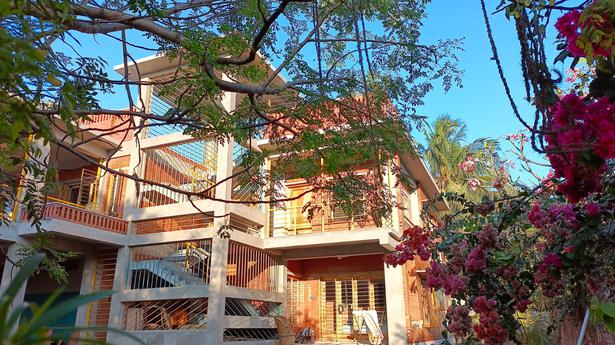
Bringing the outside inside
The Hindu
True luxury is about making use of natural light and air in homes
Today ‘luxury’ in architecture is typically viewed as using expensive and sometimes imported building materials/ finishes to create opulent spaces that are usually fully air-conditioned. The issue with this view is that we tend to sacrifice our comfort and well-being in order to achieve a visual grandeur. This results in the use of high-end and sometimes superfluous materials, excessive mechanical space conditioning, excessive use of artificial lights — all of which may not necessarily be healthy for us or the environment.
The pandemic has taught us the importance of natural ventilation, natural daylight and a connect with nature while indoors, in order to lower our stress levels and enhance our well-being. Considering this, and the fragile state of our environment today, can we redefine ‘luxury’ to mean indoor spaces that are healthy for us and focus on our comfort and wellness? For instance, could ‘luxury’ mean spaces that provide us the flexibility and option to open out windows when needed for fresh air and not let us be constrained to mechanical air-conditioning; spaces which offer us a visual and physical connect to nature; spaces that ensure energy and water security for the future? The following are some design strategies that would lead to a sustainable ‘luxury’.
1. Use of natural building materials that are available locally. Such materials are not only healthy for us but also better for the environment. For example, natural stones available relatively close to the site will ensure least pollution to the environment due to its manufacture and transportation. They are also better for our feet. Today there is a wide range of colourful, exotic stones available all over the country. Local flooring in South India such as Athangudi tiles help bring out our rich cultural heritage as well.
2. Choose flexible design that provides choice. Design spaces in such a way that they would provide us a control over our indoor environment by allowing us to connect with nature as and when we require, such as: operable windows that can be opened when needed, well-shaded exterior glazing that bring in beautiful views without the glare and the heat, spaces that are designed for the local climate without having to rely on mechanical space conditioning.
3. Get access to cutting-edge earth-friendly technologies. Solar technology such as solar photovoltaics, BIPV such as solar skylights and roof tiles, waste-water treatment and re-use technologies, rainwater harvesting systems, smart metering and sensors to monitor energy and water use can all enable us to greatly reduce our carbon footprint.
4. Create adequate green cover. Ensure adequate setback spaces are provided with a green cover that would provide oxygen and cut out dust and noise. Vegetable and fruit gardens around the building or on rooftops would result in we being satisfied with growing our own food, however little that may be. It is time to redefine a sustainable ‘luxury’ where we can boast about the low carbon footprint of our spaces rather than their visual opulence.
The writer is the founder of Green Evolution, a sustainable architecture firm.

We know birds, animals and insects constantly communicate with each other by making certain sounds. But when we think about plants, we do not ever think of them communicating. Charles Darwin, an eminent biologist, thought otherwise. Plants might appear the quiet, silent and solitary type of organisms but they have a complex way of communicating which is interesting and important for their survival.










